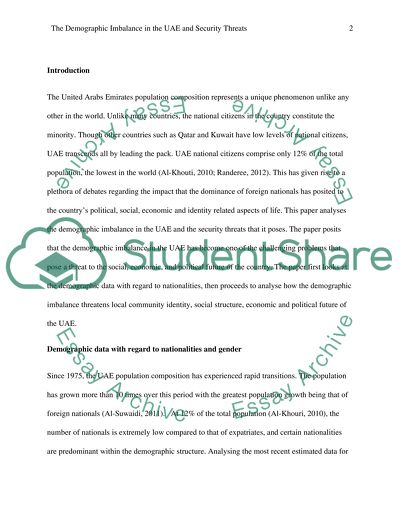Cite this document
(“The demographic imbalance in the UAE and Security Threats Research Paper”, n.d.)
Retrieved from https://studentshare.org/history/1451766-the-demographic-imbalance-in-the-uae-and-security
Retrieved from https://studentshare.org/history/1451766-the-demographic-imbalance-in-the-uae-and-security
(The Demographic Imbalance in the UAE and Security Threats Research Paper)
https://studentshare.org/history/1451766-the-demographic-imbalance-in-the-uae-and-security.
https://studentshare.org/history/1451766-the-demographic-imbalance-in-the-uae-and-security.
“The Demographic Imbalance in the UAE and Security Threats Research Paper”, n.d. https://studentshare.org/history/1451766-the-demographic-imbalance-in-the-uae-and-security.


